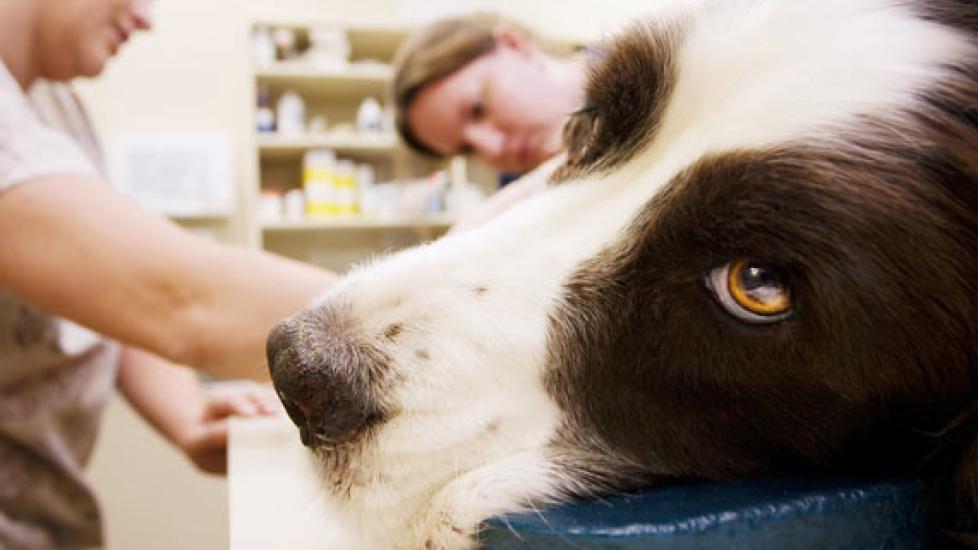Behind Every Good Veterinarian is an Even Better Veterinary Technician
Behind every good veterinarian, there’s an even better veterinary technician.
Few veterinarians would disagree with this statement. We know firsthand how hard technicians work and we only barely attempt to understand the struggles they endure on a daily basis.
We appreciate how indispensible these individuals are to ensuring that we can do our jobs as efficiently as possible and that our patients receive the maximal standard of care.
However, public awareness surrounding the role of a veterinary technician is surprisingly poor. The amount of work they perform is severely underestimated and they are given little respect for their remarkable efforts.
Most laypeople understand what a veterinarian does. They know vets are doctors trained in the prevention, diagnosis, and treatment of diseases related to animals.
Though not everyone understands the educational process behind the degree or the specifics of my job, generally speaking, I don’t have to do too much explaining once I tell people I’m a veterinarian.
When discussing the role of veterinary technicians, the remarkable individuals who back me up and work so hard to make my day flow smoothly and efficiently, I find people are much more likely to tilt their head in confusion and misunderstanding.
Veterinary technicians are typically likened to registered nurses. Though the comparison isn’t entirely correct, it does provide a partially accurate description of their role in veterinary medicine.
Like nurses, veterinary technicians assist doctors in their daily tasks, in order to streamline their schedules and maintain an excellent standard of patient care.
Veterinary technicians are trained professional staff members who provide patient monitoring, restraint, surgical and dental anesthetic assistance, perform laboratory analyses, and administer medications and treatments.
Veterinary technicians are graduates of specific programs that offer either 2 or 4 year degree granting curriculums in veterinary technology. Upon completion of a formal academic program and/or by taking state-administered certification tests, one can become credentialed as a veterinary technician.
Credentialed veterinary technicians are known by one of three different acronyms, depending on the state where they obtained their licensure:
Registered veterinary technician (RVT)
Certified veterinary technician (CVT)
Licensed veterinary technician (LVT)
The exact qualifications and requirements for obtaining the specific certification is designated by the state the technician is licensed in.
Further complicating the issue is that some states do not require individuals working in the role of a “veterinary technician” to hold any formal training or advanced degree, while in other states, it is a mandatory process. The lack of consistency in nomenclature certainly doesn't aid in clarifying the already confusing situation.
Credentialed veterinary technicians can find themselves legally capable of performing a specific task or tasks in one state, which would be considered illegal for them to perform in another state.
Such blurry lines further perpetuate the confusion about the role of the veterinary technician and make describing their specific job requirements and responsibilities difficult.
Outlining the expectations and role of a veterinary technician is quite challenging as their day-to-day responsibilities are nothing short of variable and unpredictable.
Technicians are the first people who greet our patients when they arrive for their appointments. They obtain the initial history and take the pet’s vital signs. They are responsible for obtaining all lab samples and presenting the results to me before a scheduled treatment.
Techs restrain the pets while I perform exams and double check my dosages and prescription plans. They draw up and administer chemotherapy with confidence and expertise to keep themselves and our patients safe. They also are often the ones to discharge the patient following the appointment.
Technicians are the frontline for questions from nervous owners, who are often too intimidated to ask me directly. The technicians who work with oncology patients are most often the reassuring face to owners who are in desperate need for consistency.
A very exciting aspect of veterinary technology that is becoming increasingly popular is obtaining certification in specific areas, including anesthesia, dentistry, emergency and critical care, internal medicine, cardiology, neurology, oncology, behavior, zoo medicine, equine, surgery, general practice, nutrition, and clinical pathology.
To be certified in a specific area of expertise, technicians complete an exceedingly rigorous process of formal education, intense training, hands-on experience, writing case reports, and testing. This is above and beyond the requirements they face in obtaining their general licensure to practice veterinary technology.
My job would be impossible without the assistance of the capable and talented veterinary technicians I work with each day. I rely on their ability to communicate with owners, run lab samples, administer chemotherapy treatments, and often to spend the extra time and effort keeping my patients feeling comfortable and loved. Even just attempting to enumerate the daily “tasks” of the technicians I work with is exhausting.
Veterinary technology is a physically and technically demanding field that is emotionally charged and poorly financially rewarded. It’s rare to see veterinary technicians who still work the “trenches” over the age of 35. Pay rates are low, and hours are long and often entail nights, weekends, and holidays. Those who do the work are certainly not in it for the money or the glamour.
I’m grateful to have worked alongside some of the most talented and compassionate veterinary technicians in the field. From my early days of assisting in a veterinary hospital during my undergraduate years to the technicians who shaped me during veterinary school, internship, and residency, and to those who have toiled away with me during my professional career. I’ve been privileged to know and learn from the best.
If you are considering a career in veterinary technology and live in the United States, the National Association of Veterinary Technicians in America provides an excellent resource of information regarding educational requirements and opportunities.

Dr. Joanne Intile
Image: Creatista / Shutterstock
